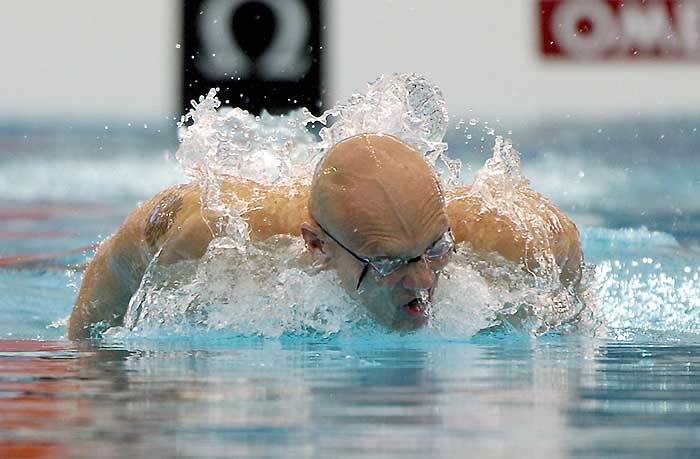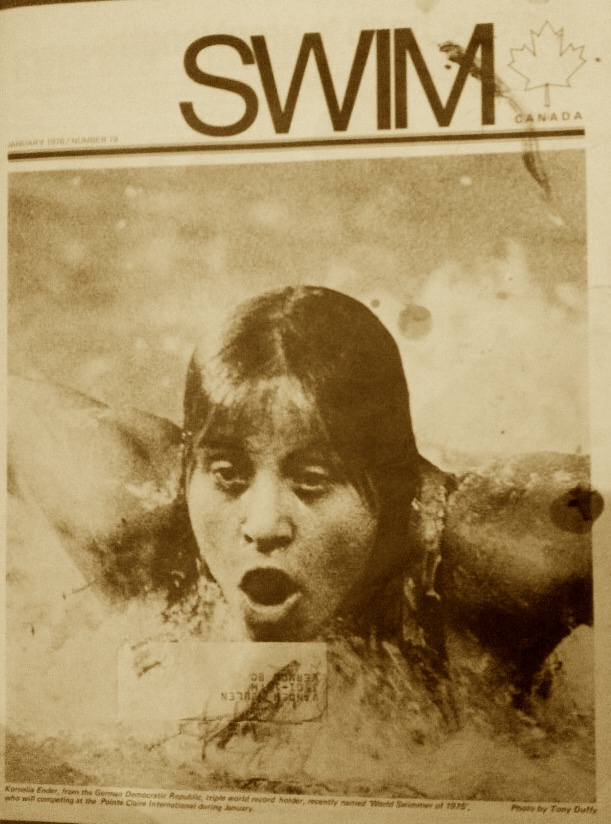In my strange swimming world I get to help loads of swimmers to learn how to get faster in a one-to-one capacity in an Endless Pool. It never surprises me to discover new things even after spending my life either in a pool or beside a pool since 1970.

To assist a swimmer to get faster, it might mean decreasing resistance, it might mean improving balance both front/back and left/right and also sometimes means developing drills that help correct a ‘stuck-in’ ineffective style. If there are parts of the stroke that are strong, it means assisting part of the stroke to get stronger.
In the specialised area of developing drills, it takes a creative insight because there must be a cause-effect underpinning. So basically; what you do, you get better at. Many drills have both good and bad affects. For example, head-up breaststroke can speed up tempo but a head-up style isn’t as fast as a wave style. Also for example; Biondi-drill is a drill that teaches poor timing and incorrect wave-style as well as incorrect arm recovery position (sorry Nort Thornton).

And so, after that blethering intro, why don’t coaches have their swimmers train butterfly kick exactly the same way as it is swum in full stroke Butterfly?
Baloney, you say! We train dolphin kick all the time. Indeed, you likely do do dolphin kick but is that exactly the same as in a Butterfly stroke? Nope.
If you watch someone swimming Butterfly you will know that a good flier kicks twice per arm rotation. Rarely swimmers kick only once per cycle like Laszlo Cseh of Hungary. If you took your imaginary eraser and erased a swimmers arms, you would note: on the downward kick the head is up and on the next downward kick the head is down (or front of body is down, the head may not be lowest point. ‘Press the T’ Bill Boomer always told me).
If you watch a swimmer perform dolphin kick on their front, with arms at their sides, at the surface, you will see the head is always on the down phase of the dolphin kick. This is also the same thing that happens using a kick board. This is not what happens in Butterfly.

To understand Butterfly it is important to understand how it evolved. In the 1930s, an innovative swimmer (Jack Sieg) and his coach (David Armbruster) changed breaststroke into what became Butterfly. Armbruster theorised that an over-arm recovery might be a faster way to swim breaststroke. This evolved into changing the kick as well, and subsequently single kick into two kicks per arm cycle. This change was not popular with everyone, and the kick was considered illegal. There was a very turbulent phase in breaststroke technique from 1936 until 1956 (and some other turbulent stuff going on) between the Berlin and Melbourne Olympics. Breaststroke began to disappear since Butterfly style was so much faster, for example with the 100yd time going down to one minute. To solve this problem, in the 1956 Olympics, there were Butterfly races separate from Breaststroke.
So this means in terms of specificity, for designing a good drill, to replicate exactly what happens in butterfly, there is not a one-kick-one-pull action like Breaststroke but a double kick on each arm pull. So dolphin kicking should be done with head up 50% of the time.
A couple of good drills to do, to develop Butterfly, is firstly to do dolphin kicking with head up. This is a very difficult, but helpful, strengthening drill. The second drill is to replicate butterfly kick timing by kicking with head up, then kick again on the down.
A good drill to do is to kick on your back with arms at the side. This replicates the flow of the heal’s action underwater. In butterfly the powerful second kick brings the heals up out of the water. In underwater kicking this does not happen. So dolphin kick on your back helps to train that aspect.
These drills, if you’ve not done them, are called: Granny Fly Kick. And No Arms Fly.
Strangely, doing dolphin kick with a board has became less common. The important development of the centre mounted snorkel (CMS) assisted many stroke improvements but for full stroke fly it lets down the dolphin kick during the breath phase.
If you find this interesting let me know and leave a comment.

Very interesting insight. We have a swimmer able to win Welsh Nationals on single kick but I always wonder how far she could go with two kicks per cycle.
LikeLike
There’s a few international swimmers that have done well with single kicks but certainly historically the two beat wins. Probably the most well known is the Hungarian that is mentioned. Often there is a bit of a secondary kick like there is in breaststroke
LikeLike
Yes I coach in Scotland
LikeLike
Do you coach Gary?
LikeLike
Coaching in Stirling area in Scotland
LikeLike
Thanks for your insight Gary. Always looking for drills to help my swimmers be better and my coaching to be better. Best regards!
LikeLike